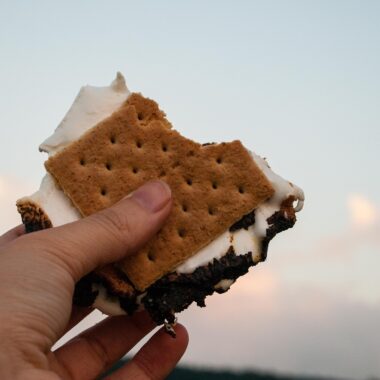Baking at high altitude can be challenging, especially when it comes to cookies. The reduced air pressure at elevations above 3,000 feet impacts the way ingredients interact, often resulting in cookies that spread too much, turn out dry, or fail to rise properly. To achieve perfect cookies at high altitude, you’ll need to tweak your recipe. Here’s a guide to adjusting your cookie recipes for high-altitude success.
Why Does High Altitude Affect Baking?
At higher elevations, air pressure is lower, which causes:
Faster evaporation of liquids, leading to dryness.
Increased expansion of leavening gases, which can cause cookies to spread or collapse.
Reduced boiling point of water, affecting cooking times.
Understanding these factors helps you make informed adjustments to your recipes.
Adjust Your Flour
Add 1 to 4 extra tablespoons of flour to your recipe.
The additional flour helps provide structure, reducing spreading and resulting in thicker cookies.
Modify Sugar
Reduce sugar by 1 to 2 tablespoons.
Sugar liquefies during baking, so cutting back slightly helps prevent cookies from spreading too much.
Change Liquid Ingredients
Increase liquid (milk, water, or other liquids) by 1 to 2 teaspoons.
This compensates for the faster evaporation rate at high altitude, keeping your cookies moist.
Adjust Leavening Agents
Reduce baking powder or baking soda by ¼ teaspoon for every teaspoon in the recipe.
Excess leavening can cause cookies to rise quickly and then collapse.
Adjust Oven Temperature
Increase the oven temperature by 15–25°F (about 10–15°C).
This helps set the cookies faster, preventing excessive spreading.
Shorten Baking Time
Reduce the baking time by 1–2 minutes.
Higher heat and faster evaporation mean cookies bake more quickly at altitude.
Test and Adapt
Start by making small test batches when trying a new recipe at altitude. This allows you to fine-tune the adjustments without wasting ingredients.
High-Altitude Baking Tips
Use Room Temperature Ingredients: Cold butter or eggs can affect dough consistency at high altitudes.
Chill the Dough: Chilling helps maintain shape and prevents excessive spreading.
Keep Notes: Document the changes that work for you; altitudes can vary significantly, so adjustments might differ depending on your location.
Example Recipe: High-Altitude Chocolate Chip Cookies
Ingredients:
2 ½ cups flour (+2 tablespoons for altitude)
¾ teaspoon baking soda (-¼ teaspoon for altitude)
1 cup unsalted butter, softened
¾ cup sugar (-1 tablespoon for altitude)
¾ cup brown sugar
1 teaspoon salt
2 teaspoons vanilla extract
2 large eggs
2 cups chocolate chips
Directions:
Preheat oven to 375°F (190°C).
Combine dry ingredients in a bowl.
Beat butter and sugars until creamy.
Add eggs and vanilla, mix well.
Gradually mix in dry ingredients, then fold in chocolate chips.
Chill dough for 30 minutes.
Bake 8–10 minutes, or until golden.
Adjusting cookie recipes for high altitude may require experimentation, but with these tips, you can ensure your cookies turn out just as delicious as at sea level.
Troubleshooting Common High-Altitude Cookie Issues
Even with the right adjustments, baking at high altitude can sometimes feel like an experiment. Here are common problems and their solutions:
Cookies Are Too Flat
Cause: The dough lacks structure, often due to insufficient flour or too much sugar.
Solution: Add an extra tablespoon of flour and reduce sugar slightly. Chilling the dough before baking can also help cookies hold their shape.
Cookies Spread Too Much
Cause: Butter or other fats melted too quickly due to low air pressure or high oven temperature.
Solution: Use slightly less butter and chill the dough for at least 30 minutes before baking.
Ensure your oven temperature is accurate with an oven thermometer.
Cookies Are Dry or Crumbly
Cause: Excessive evaporation of liquid ingredients.
Solution: Increase liquid by 1–2 teaspoons and watch the baking time closely. Reducing baking time by a minute can help retain moisture.
Cookies Are Puffy and Cakey
Cause: Too much flour or too little sugar can lead to dense, cake-like cookies.
Solution: Recheck measurements and ensure you’re not overcompensating with extra flour.
Test a batch with a slight reduction in flour if needed.
Frequently Asked Questions
Q: How do I adapt store-bought cookie mixes for high altitude?
A: Follow the package’s high-altitude instructions if available. If not, apply the same adjustments as for a homemade recipe: increase flour slightly, reduce sugar, and adjust liquids and baking times.
Q: Do all cookie recipes need adjustments at high altitude?
A: Not necessarily. Some recipes, especially those with high-fat content or minimal leavening, may work fine as-is. Test the recipe before making changes.
Q: Is chilling cookie dough always necessary at high altitude?
A: While not always required, chilling the dough can prevent cookies from spreading excessively and improve texture, making it a helpful step for high-altitude baking.
Baking cookies at high altitude requires patience and a bit of trial and error, but it’s well worth the effort to achieve perfectly chewy, moist, or crispy cookies. By understanding the science behind ingredient interactions and tweaking recipes with the steps outlined here, you’ll become a master of high-altitude cookie baking in no time.
When in doubt, start small—make a half batch or bake one test cookie first. Keep track of the adjustments you make and enjoy the process of perfecting your high-altitude baking skills.
With practice, you’ll soon be creating cookies that rival the best bakeries, no matter how high you’re baking!


















